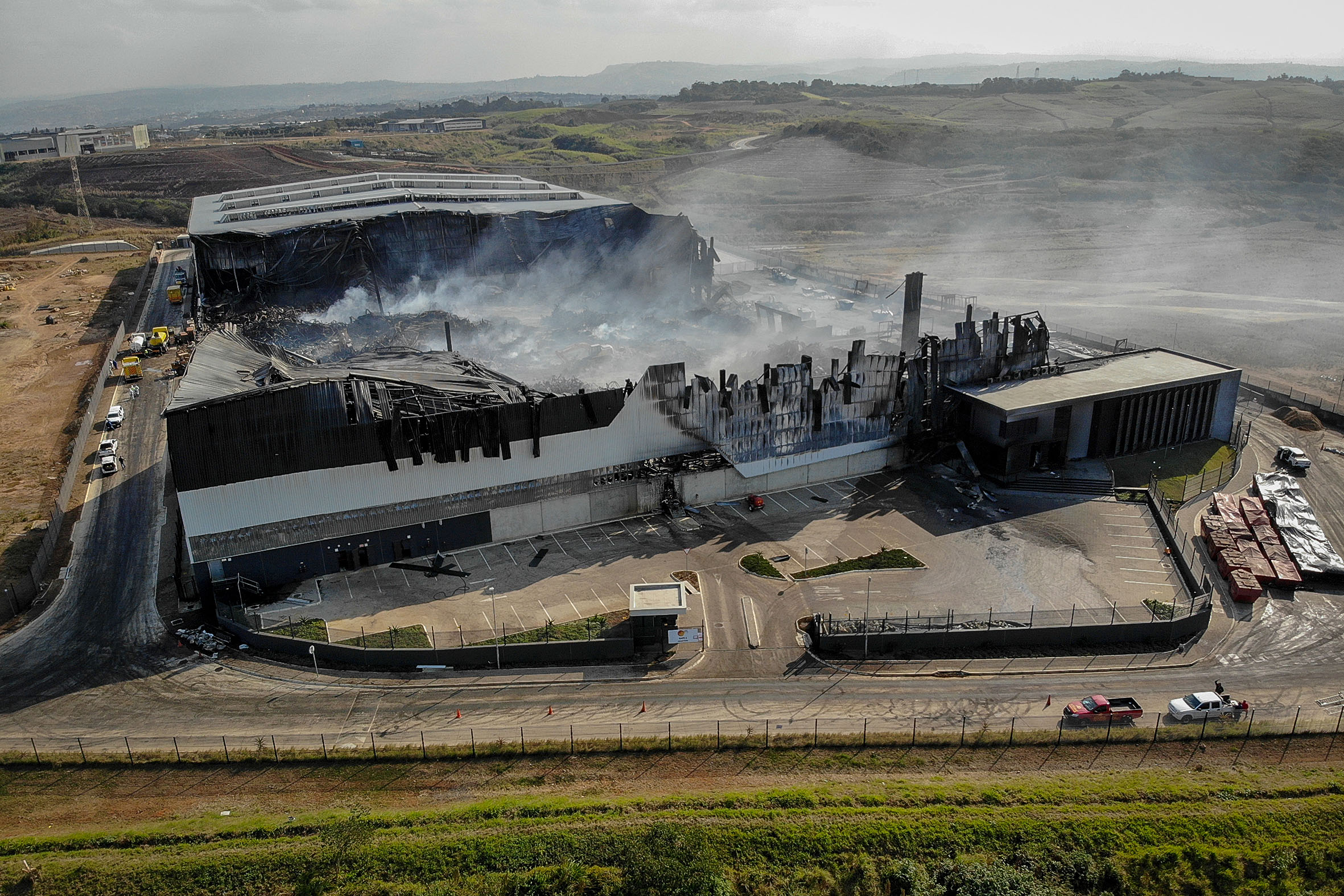The chemical giant UPL has been tight-lipped about the contents of the warehouse torched during July’s unrest, emitting a choking blanket of smoke over surrounding communities and poisoning an adjacent river and wetland.
 Four months ago, agrochemical giant UPL quietly moved into a newly built warehouse in Cornubia, Durban. (Photo: Mlungisi Mbele)
Four months ago, agrochemical giant UPL quietly moved into a newly built warehouse in Cornubia, Durban. (Photo: Mlungisi Mbele)
On Tuesday, amaBhungane revealed much of the extremely toxic contents, piercing the persistent secrecy. Today we are making the full inventory of the warehouse available to readers.
See amaBhungane’s article in Daily Maverick: Here it is: the toxic stockpile of chemicals in torched United Phosphorus Limited Durban warehouse
Get the full inventory
A perusal of the inventory shows that UPL was storing large quantities of chemicals that are banned elsewhere in the world but not in South Africa.
Among these products banned in the EU and elsewhere are:
- More than 40,000 litres of paraquat-based herbicides which have been banned in more than 50 countries including the UK, China, Switzerland and Thailand;
- Roughly 150,000 litres of atrazine-based products and another 30 tonnes in dry form. Atrazine is banned in 31 countries including the EU;
- 36,000 litres of chlorpyrifos-based products which are banned in the US and EU;
- Almost 92 tonnes of mancozeb-based products which are banned in the EU;
- 141,000 litres of 2,4-D-based products and 51 tonnes in dry form, banned in Vietnam, Norway and Mozambique;
- More than 37 tonnes of products using maleic hydrazide which is banned in the EU except under exceptional circumstances and also banned in India; and
- More than 26 tonnes of methomyl-based product banned in India and used under severe restrictions in the US.
 Clean-up crews have been working on the site from day one, while residents wait for test results from UK laboratories. (Photo: Mlungisi Mbele)
Clean-up crews have been working on the site from day one, while residents wait for test results from UK laboratories. (Photo: Mlungisi Mbele)
UPL publishes all the safety data sheets (also called Material Safety Data Sheets) for their products on its website. One can search according to the product name or the active ingredient. The safety data sheets provide information about the hazards associated with the products, and both the short- and long-term health and environmental impacts of the products. DM




 Clean-up crews have been working on the site from day one, while residents wait for test results from UK laboratories. (Photo: Mlungisi Mbele)
Clean-up crews have been working on the site from day one, while residents wait for test results from UK laboratories. (Photo: Mlungisi Mbele)